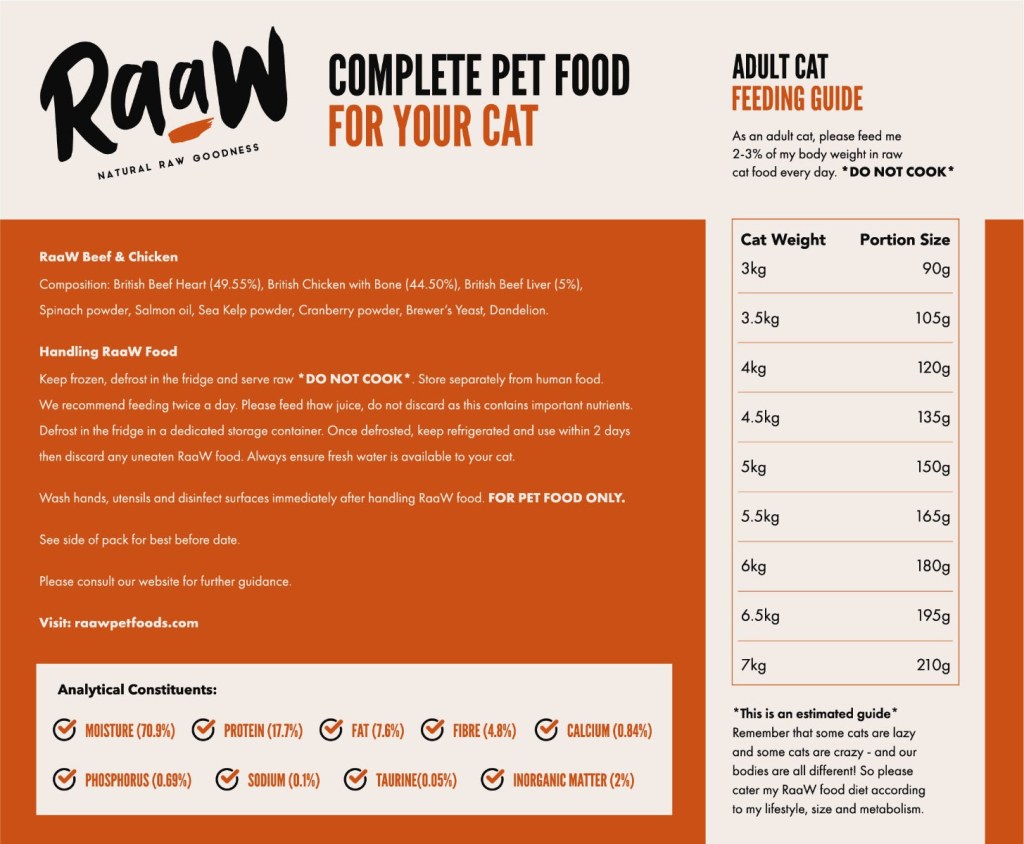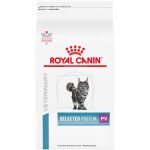Optimize Your Cat’s Health With The Perfect Raw Cat Food Portion Size: Click Now To Learn More!
Raw Cat Food Portion Size: All You Need to Know
Greetings, Cats Lovers! If you are a cat enthusiast who believes in providing the best nutrition for your feline companion, then understanding the appropriate raw cat food portion size is crucial. Feeding your cat a raw diet can offer numerous benefits, but it’s essential to ensure they receive the right amount of food to maintain their health and well-being. In this article, we will delve into the topic of raw cat food portion size, providing you with comprehensive information to make informed feeding decisions. So, let’s get started!
Table of Contents:
What is Raw Cat Food Portion Size?
Who Needs Raw Cat Food Portion Size Guidelines?
When Should You Consider Adjusting Portion Sizes?
Where Can You Find Reliable Portion Size Information?
Why is Raw Cat Food Portion Size Important?
How to Determine the Right Portion Size for Your Cat?
Advantages and Disadvantages of Raw Cat Food Portion Size
Frequently Asked Questions
Conclusion
Final Remarks
2 Picture Gallery: Optimize Your Cat’s Health With The Perfect Raw Cat Food Portion Size: Click Now To Learn More!


What is Raw Cat Food Portion Size?
Raw cat food portion size refers to the recommended quantity of raw food that should be served to a cat during each meal. It is crucial to determine the appropriate portion size to ensure that your cat receives all the necessary nutrients without overeating or underfeeding. By feeding the right amount, you can maintain your cat’s ideal weight, promote healthy digestion, and prevent potential health issues related to improper feeding.

Image Source: floppycats.com
When considering the portion size, it is essential to take into account factors such as your cat’s age, weight, activity level, and overall health condition. Each cat is unique, and their dietary needs may vary. Therefore, it is crucial to tailor the portion size according to your cat’s individual requirements.
Factors to Consider When Determining Portion Size:
Weight: Cats’ portion sizes are often determined based on their weight. Generally, it is recommended to feed cats 2-4% of their body weight in raw food daily. However, this can vary depending on other factors.
Age: Kittens may require a higher portion size due to their rapid growth and development. As cats age, their metabolism may slow down, and portion sizes may need adjustment.
Activity Level: More active cats may require larger portions to meet their energy needs, while less active cats may require smaller portions to prevent weight gain.
Health Condition: Cats with specific health conditions, such as diabetes or kidney disease, may require special portion sizes tailored to their needs. Consult with your veterinarian for personalized recommendations.
Who Needs Raw Cat Food Portion Size Guidelines?
Raw cat food portion size guidelines are beneficial for all cat owners who choose to feed their cats a raw diet. Whether you are transitioning your cat to a raw diet for the first time or have been feeding them raw food for a while, understanding the appropriate portion size can help you ensure that your cat receives balanced nutrition.

Image Source: shopify.com
It is especially crucial for cat owners who prepare homemade raw cat food. By following portion size guidelines, you can ensure that your homemade meals provide all the necessary nutrients and avoid potential nutrient deficiencies or imbalances.
When Should You Consider Adjusting Portion Sizes?
Adjusting raw cat food portion sizes may be necessary in various situations. It is essential to monitor your cat’s weight, body condition, and overall health regularly. Consider adjusting the portion sizes if you notice:
Weight Gain: If your cat is gaining weight consistently, it may be necessary to reduce the portion size to prevent obesity.
Weight Loss: If your cat is losing weight or appears underweight, increasing the portion size may be necessary to support healthy weight gain.
Energy Level: If your cat seems lethargic or lacks energy, adjusting the portion size may help provide the necessary nutrients and fuel.
Digestive Issues: If your cat experiences frequent digestive issues, such as diarrhea or constipation, portion sizes may need modification to promote better digestion.
Health Conditions: Cats with specific health conditions, such as allergies or gastrointestinal sensitivities, may require portion size adjustments tailored to their needs.
Where Can You Find Reliable Portion Size Information?
When it comes to finding reliable raw cat food portion size information, it is essential to consult reputable sources. Your veterinarian can provide personalized guidance based on your cat’s specific needs and health condition.
Additionally, there are several trustworthy online resources and books dedicated to raw feeding for cats. Look for information from certified feline nutritionists or experienced raw feeders who prioritize the well-being of cats.
Why is Raw Cat Food Portion Size Important?
Raw cat food portion size plays a vital role in maintaining your cat’s overall health and well-being. Here are some reasons why it is essential:
Prevents Overfeeding: Feeding your cat the right portion size helps prevent overfeeding and weight gain, reducing the risk of obesity-related health issues.
Optimizes Nutrition: By feeding the appropriate portion size, you can ensure that your cat receives all the necessary nutrients for optimal health and vitality.
Avoids Nutrient Imbalances: Balanced portion sizes contribute to a well-rounded diet, minimizing the risk of nutrient deficiencies or imbalances that can lead to health problems.
Promotes Healthy Digestion: Proper portion sizes support healthy digestion, reducing the chances of digestive issues such as vomiting or diarrhea.
Individualized Feeding: Determining the right portion size allows you to tailor your cat’s diet to their specific needs, considering factors such as age, weight, and activity level.
How to Determine the Right Portion Size for Your Cat?
Determining the right raw cat food portion size for your cat may require some trial and error. Here are a few steps to help you get started:
Consult with Your Veterinarian: Your veterinarian can provide personalized guidance based on your cat’s specific needs, helping you determine the appropriate portion size.
Follow General Guidelines: General guidelines suggest feeding cats 2-4% of their body weight in raw food daily. Start with the lower end and monitor your cat’s condition and weight. Adjust as necessary.
Observe Your Cat’s Body Condition: Regularly assess your cat’s body condition to ensure they are maintaining a healthy weight. Adjust portion sizes accordingly to prevent obesity or undernourishment.
Monitor Energy Levels: Pay attention to your cat’s energy levels and overall activity. Adjust portion sizes if your cat appears lethargic or hyperactive.
Reassess with Veterinary Check-ups: Regular veterinary check-ups can help you evaluate your cat’s overall health and whether portion sizes need modification.
Advantages and Disadvantages of Raw Cat Food Portion Size
It is essential to consider both the advantages and disadvantages of raw cat food portion size before incorporating it into your cat’s diet. Here are some points to consider:
Advantages:
Weight Management: Proper portion sizes can help maintain your cat’s ideal weight and prevent obesity.
Nutritional Balance: Balanced portion sizes ensure your cat receives all the necessary nutrients for optimal health.
Individualized Feeding: Portion sizes can be tailored to your cat’s specific needs, promoting personalized nutrition.
Improved Digestion: Appropriate portion sizes support healthy digestion and reduce the risk of digestive issues.
Prevents Overfeeding: Feeding the right portion size prevents overfeeding, reducing the risk of obesity-related health problems.
Disadvantages:
Complexity: Determining the right portion size may require trial and error, as each cat’s needs can vary.
Time-Consuming: Preparing and measuring portion sizes can be time-consuming, especially for homemade raw diets.
Cost: Raw cat food may be more expensive than commercial cat food, especially when sourcing high-quality ingredients.
Expertise Required: Preparing a balanced raw cat food diet requires knowledge about feline nutrition to avoid nutrient deficiencies or imbalances.
Storage and Safety: Proper storage and handling of raw cat food are essential to prevent bacterial contamination and foodborne illnesses.
Frequently Asked Questions
Q: Can I free-feed my cat a raw diet?
A: Free-feeding is not recommended for raw diets, as it can lead to overeating and weight gain. It is best to provide measured portion sizes at regular intervals.
Q: How often should I adjust my cat’s portion sizes?
A: Portion sizes should be regularly evaluated and adjusted as needed based on your cat’s weight, body condition, activity level, and overall health. Consult with your veterinarian for guidance.
Q: Can I use a commercial raw diet or should I prepare it myself?
A: Both options can be suitable, depending on your preferences and the availability of high-quality commercial raw diets. If preparing homemade raw meals, ensure they are nutritionally balanced.
Q: Can I feed my cat only raw meat?
A: A complete and balanced raw cat diet should include not only raw meat but also essential nutrients such as organs, bones, and supplements. Consult with a feline nutritionist or veterinarian for guidance.
Q: Are there any risks associated with feeding a raw diet?
A: Raw diets carry some risks, such as bacterial contamination and potential nutrient imbalances if not properly balanced. It is crucial to handle raw food safely and consult professionals for guidance.
Conclusion
In conclusion, understanding the appropriate raw cat food portion size is essential for providing your feline companion with a balanced and nutritious diet. By considering factors such as weight, age, activity level, and health condition, you can tailor the portion size to meet your cat’s individual needs. Regular monitoring and adjustments, along with guidance from your veterinarian, can ensure your cat maintains a healthy weight and optimal well-being. Remember, proper nutrition is key to promoting a happy and healthy life for your beloved cat!
Final Remarks
Feeding your cat a raw diet can offer numerous benefits, but it is important to note that it may not be suitable for all cats. Before transitioning your cat to a raw diet or adjusting their portion sizes, it is crucial to consult with your veterinarian to ensure they receive a nutritionally balanced diet. Additionally, practicing proper food handling and storage techniques is essential to prevent foodborne illnesses. This article serves as a guide to help you understand raw cat food portion sizes, but individualized advice from professionals should always be sought. Remember, your cat’s well-being is the top priority, and a healthy diet plays a vital role in their overall health and happiness!
This post topic: Cats



